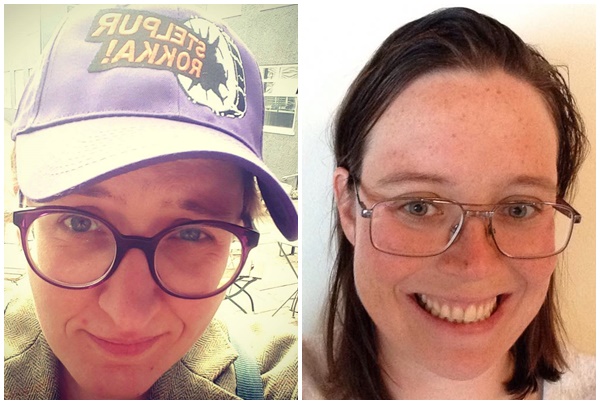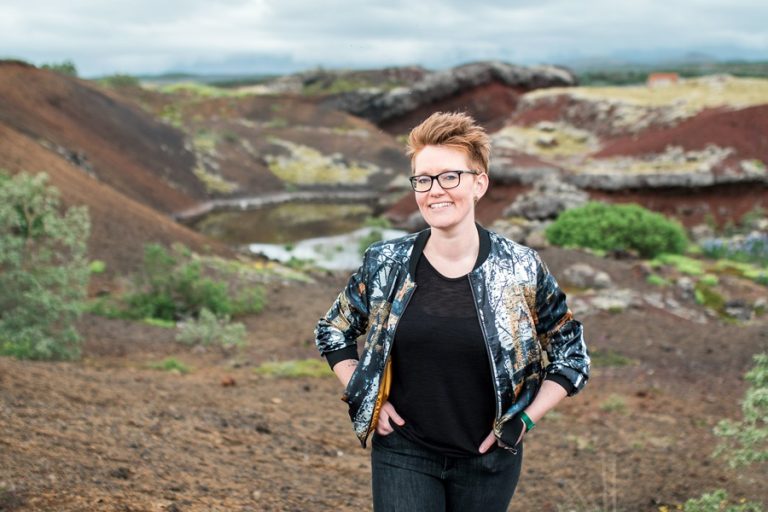A new book with a collection of academic articles about queer history will be published in Icelandic this August. One of the editors, Ásta Kristín Benediktsdóttir, says this aspect of Icelandic history has been largely ignored in Icelandic academic writings.

“The book consists of six articles and it’s the first time academics in different fields join forces to tackle this subject. Until recently queer history in Iceland has mostly been documented by people outside the academic field, or at least their writings have primarily been published outside the academia,” explains Ásta.
She is a doctoral student, studying Icelandic literature, and the other editors, Íris Ellenberger and Hafdís Erla Hafsteinsdóttir, are both historians. Each of the three editors writes one article in the book and besides them Þorvaldur Kristinsson, Kristín Svava Tómasdóttir og Þorsteinn Vilhjálmsson each write about various subjects.
“The articles cover different grounds as the authors come from different academic fields,” Ásta says. “There is an essay on the reception and translation of Sappho’s poems, another about the case of Guðmundur Sigurjónsson, the first and only person sentenced to jail in Iceland for homosexuality, and the other essays cover the representation of homosexuality as the image of evil in the media in the 1950s, the history of the library of the National Queer Organisation Samtökin ’78 , and finally one closer to our times about the image of Iceland as a gay utopia. Last, but not least, the book also includes an important article about queer history as an academic subject.”
Ásta says that historians in Iceland have hardly touched this subject before. “The people who have written about queer history in Iceland so far have mostly been those who have been active in the fight for queer rights and worked for the queer organisations, Samtökin ’78, Reykjavík Pride etc. So we are breaking a new ground here. By this I do not mean that only academics should write about queer history – of course not. Everyone’s insight and contribution is important. We need to look at this history from many perspectives and the academia also needs to participate in this project.”
“… queer history in Iceland has mostly been documented by people outside the academic field, or at least their writings have primarily been published outside the academia … [This is] … the first time academics in different fields join forces to tackle this subject. ”
In the U.S. some academics have been sceptical of this distinction between queer history and history in general, and have argued that by writing queer history separately people are giving the feeling that it’s not part of the general history of the nation. Is that something that has been discussed in the historic field in Iceland?
“That’s a very good question. You can define the concept “queer history” in different ways. You can see it as the history of queer people first and foremost – and from that perspective it is clear that we need to bring that history forward, as it is often pushed aside.

It’s the same issue as with women’s history – the general history of the world and it’s inhabitants is often presented as the history of men, first and last. In the last decades there has been a growing interest in feminist approaches to this history and historians in general have been pressured to represent women as well in historic writings, as they have obviously been a big part of the history of mankind.
In the same way, the world history has generally been told as the history of straight people, or at least those who are considered ‘normal’ when it comes to sexuality and sexual orientation. We need to change this and as long as queer people are not represented in “the usual mainstream history” it’s is necessary to write queer history separately, but also to demand that queer people are included in the mainstream history.
On the other hand queer history is also a question of approach and methodology – to inspect the world and its history from a queer perspective, look at how societies and people at different times have understood and thought about gender, sexuality, sex, sexual conduct etc., speculate about people’s sexuality and their ideas about the world – without taking for granted that everyone has always thought of themselves and the world from the perspective of hetero/homosexuality. Because we know that the idea that everyone is either straight or gay is relatively new in the historic context.”
“… as long as queer people are not represented in “the usual mainstream history” it’s is necessary to write queer history seperately, but also to demand that queer people are included in the mainstream history.”
But how important is it for the fight for equal rights to document and define queer history?
“It’s very important. It’s very interesting, and it is mentioned in some of the articles in the book, that at least since the National Queer Organisation (Samtökin ’78) was founded there has been a huge emphasis on the importance of queer people knowing themselves and their history, that they have some role models both in the past and present, and on creating knowledge and recover it from the past. This is important for people’s identity and their quality of life. In the past, when people had hardly any queer role models in the media or in society in general, books and films that showed queer people and queer aspects of life were simply essential. And now, even though we live in a changed world, it’s still vital.

There is a huge interest within the queer community in talking and hearing about queer history. People want this story told. They want to hear the stories of their elders and people who have different experiences than themselves. They want to hear about what it was like being queer “in the old days”, about the fight for equal rights and the people who fought that fight. They also want to hear about the HIV period, even though it’s unbearably difficult. There is a general interest in hearing other sides of queer history too, for example the history of queer women, bisexual people, trans people, intersex people and the stories of the people who were not active in the battle for equal rights, etc., etc.
Having said that, we are aware of the fact that our book does not at all tell the whole story or represent all queer people. It’s limited in many ways; there is more emphasis on men than women and almost nothing about other groups under the queer umbrella than homosexuals. It’s obviously not ideal, but we hope people will look mildly on that and realize that this is just one step of many.
And hopefully in the next few years more and more people, both within and outside the academia, will share their stories and document queer history. We hope that as many perspectives as possible will be represented, cause that’s how it should be.”
Ásta adds that the exact publishing date of the book has been set.
“We wanted to celebrate the book’s publishing at Reykjavík Pride, so there will be a publishing party at the University Bookstore (Bóksala stúdenta) on Friday, August 11th, at 16PM. Hopefully it will be available in all major bookstores around that time. ”
Main photo: Bettina Vass Photography


